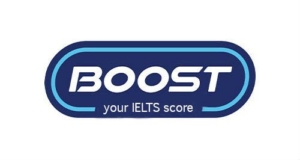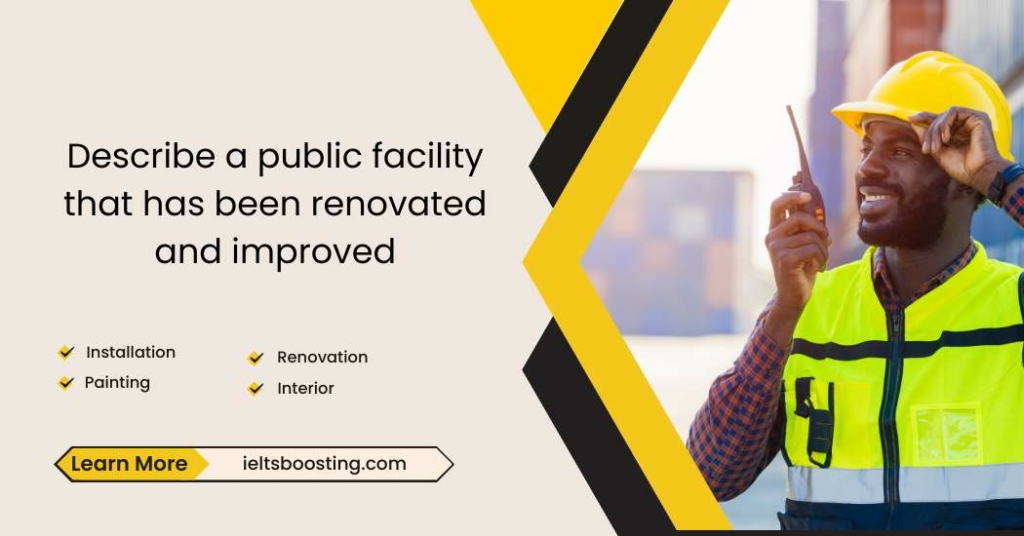Describe a public facility that has been renovated and improved
You should say:
What the facility is
When it was renovated and improved
What has been renovated and improved
And explain how you feel about it
Sample answer
One notable public facility in Ho Chi Minh City that has undergone significant renovation and improvement is the Tao Dan Park. The park, which is a popular spot for both locals and tourists, was renovated quite recently, I believe it was completed around mid-2023.
Originally, Tao Dan Park was already a charming place, known for its lush greenery and serene atmosphere. However, the renovation took it to another level. They upgraded the walking paths, making them more accessible, especially for people with disabilities. The playground area for children was also completely revamped with safer and more modern equipment. Additionally, they added more benches and installed new, energy-efficient lighting throughout the park.
I feel quite positive about these changes. The renovation has not only enhanced the beauty and utility of the park but also made it a more inclusive space. It’s great to see the city investing in such projects that improve the quality of life for its residents and also attract tourists. The park now serves as a perfect escape from the bustling city life and offers a peaceful retreat right in the heart of Ho Chi Minh City.
Useful vocab
- Notable: Worthy of attention or remarkable.
- Renovation: The act of repairing and improving something, especially a building.
- Public facility: A place provided, usually by a government, for the benefit and use of the public.
- Locals: People living in a particular area or place.
- Tourists: People who are traveling or visiting a place for pleasure.
- Charming: Pleasant or attractive.
- Lush greenery: Abundant and rich vegetation.
- Serene: Calm, peaceful, and untroubled.
- Upgraded: Improved or enhanced in quality.
- Accessible: Able to be reached or entered.
- Disabilities: Physical or mental conditions that limit a person’s movements, senses, or activities.
- Revamped: Give new and improved form, structure, or appearance to.
- Benches: Long seats for several people, typically made of wood or metal.
- Energy-efficient: Using less energy to provide the same level of performance, comfort, or convenience.
- Inclusive: Not excluding any section of society or any party involved in something.
- Quality of life: The standard of health, comfort, and happiness experienced by an individual or group.
- Bustling: Full of activity; lively.
- Retreat: A quiet or secluded place in which one can rest and relax.
Combine with:
Describe a place in your country
Describe a park/garden you have enjoyed visiting

Describe a public facility that has been renovated and improved
Part 3 -Describe a public facility that has been renovated and improved
What are the benefits of public facilities?
Public facilities, like parks, libraries, and community centers, offer numerous benefits. Firstly, they provide spaces for recreation and relaxation, which is essential for mental and physical well-being. Additionally, they serve as social hubs, encouraging community interaction and cohesion. Furthermore, well-maintained public facilities can enhance the overall aesthetic of a city and attract tourists, boosting the local economy.”
Useful Vocabulary:
- Public facilities: Amenities or services provided for public use.
- Recreation: Activities done for enjoyment when not working.
- Relaxation: The state of being free from tension and anxiety.
- Well-being: The state of being comfortable, healthy, or happy.
- Social hubs: Places where people gather to socialize.
- Community interaction: The act of people from the same area engaging with each other.
- Cohesion: The action or fact of forming a united whole.
- Well-maintained: Kept in good condition.
- Aesthetic: Concerned with beauty or the appreciation of beauty.
- Attract tourists: Draw visitors to a place for leisure or travel.
- Boosting: Help or encourage to increase or improve.
- Local economy: The economy of a specific area or region.
Why are some public transport methods popular, such as the subway?
Public transport methods like the subway are popular primarily due to their efficiency. Subways can bypass traffic congestion, making them a faster option in many urban areas. Additionally, subways offer a cost-effective mode of transport, especially for daily commuters. They are also seen as more environmentally friendly compared to individual car usage, as they reduce carbon emissions.
Useful Vocabulary:
- Efficiency: The ability to achieve a task with minimum wasted effort or expense.
- Bypass: Avoid or go around.
- Traffic congestion: Heavy traffic, resulting in slower speeds and longer trip times.
- Urban areas: Regions characteristic of a city or town.
- Environmentally friendly: Not harmful to the environment.
- Carbon emissions: Release of carbon dioxide into the atmosphere.
- Cost-effective: Economical; good value in relation to the price, or cost.
- Mode of transport: A means of traveling from one place to another.
- Daily commuters: People who travel to and from work regularly.
- Public transport: Transportation services available to the public.
Why are some public transport methods unpopular?
Some public transport methods are unpopular due to factors like unreliability and overcrowding. If buses or trains frequently run late or are inconsistent, people find them inconvenient. Overcrowding, especially during peak hours, can make the journey uncomfortable and stressful. Additionally, lack of cleanliness and maintenance in some systems can deter people from using them regularly.”
Useful Vocabulary:
- Unreliability: The quality of not being able to be relied upon.
- Overcrowding: Excessively filled with people, leaving little or no room for movement.
- Inconvenient: Causing trouble, difficulties, or discomfort.
- Peak hours: Times of day when demand is highest.
- Uncomfortable: Causing or feeling slight pain or physical discomfort.
- Stressful: Causing mental or emotional stress.
- Cleanliness: The state of being clean and free from dirt.
- Maintenance: The process of maintaining or preserving someone or something.
- Deter: Discourage someone from doing something.
- Regularly: With consistent and uniform intervals.
What kind of transport do young people and old people prefer?
Young people often prefer transport methods that are fast, convenient, and tech-friendly, like bikes, subways, or ride-sharing apps. They value the efficiency and flexibility these modes offer, especially in urban areas. On the other hand, older people tend to prioritize comfort and safety, preferring public buses or trains with accessible facilities and comfortable seating. They also appreciate transport with clear schedules and routes, which provide a sense of reliability and ease.”
Useful Vocabulary:
- Tech-friendly: Compatible with or incorporating technology.
- Efficiency: The ability to accomplish something with minimal waste of time and effort.
- Flexibility: The quality of being adaptable or variable.
- Urban areas: Regions characteristic of a city or town.
- Prioritize: Treat something as more important than other things.
- Comfort: A state of physical ease and freedom from pain or constraint.
- Safety: The condition of being protected from or unlikely to cause danger, risk, or injury.
- Accessible facilities: Amenities that are easy to reach or use, especially by people with disabilities.
- Comfortable seating: Chairs or seats that provide physical ease and relaxation.
- Reliability: The quality of being trustworthy or performing consistently well.
- Ease: A state of being comfortable or free from stress.
What do you think are the differences between Vietnamese square now and in the future?
Currently, Vietnamese squares often serve as traditional cultural and social hubs, hosting a variety of local events and markets. In the future, I envision these squares becoming more modernized and technologically equipped, possibly featuring advanced infrastructure like digital information boards and free Wi-Fi zones. There might also be a shift towards more eco-friendly designs, with increased green spaces and environmentally sustainable materials. Additionally, future squares could integrate more facilities for leisure and entertainment, reflecting the evolving lifestyle needs of the community.”
Useful Vocabulary:
- Cultural hubs: Centers of cultural activities and interactions.
- Social hubs: Places where people gather for social activities.
- Modernized: Updated with the latest technology or ideas.
- Technologically equipped: Provided with modern technological tools and facilities.
- Infrastructure: The basic physical and organizational structures and facilities.
- Eco-friendly: Not harmful to the environment.
- Green spaces: Areas with grass, trees, or other vegetation.
- Environmentally sustainable: Capable of being maintained at a certain rate or level without harming the environment.
- Leisure: Time free from work or duties.
- Entertainment: Activities that provide amusement or enjoyment.
- Evolving: Developing gradually over time.
- Community: A group of people living in the same place or having particular characteristics in common.


